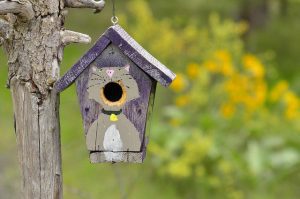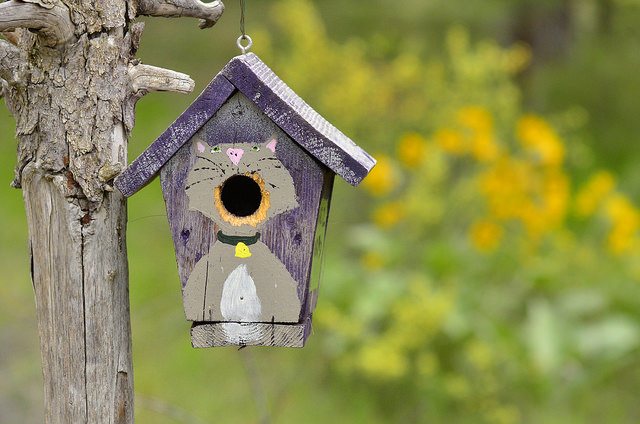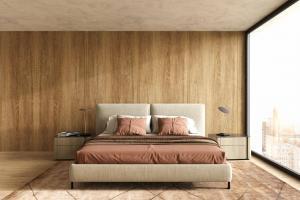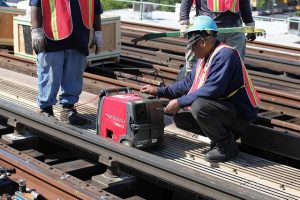Birdhouses are fun additions to your property and make great gifts, too! You can easily create decorative birdhouses with simple materials such as popsicle sticks and plastic bottles or fancy ornaments such as stone or mosaics. These materials are durable enough to adorn functional birdhouses.
You can even transform an old teapot into a fun project stylish little birdhouse.
The perfect project and a cozy nesting place for some feathered friends of your garden’s colorful visitors by carefully plugging an entrance hole in the spout and creating a third entrance hole in the correct size and at the optimal height.
We’ll cover the basics for the building process of a DIY birdhouse here, step by step instructions, and we’ll provide you with some fantastic ideas for painting and decorating birdhouses and the many other plants and animals, plants and other animals your winged family would love to call their permanent home too.
Birdhouse Types and Ideas
The best birdhouse for the small birds next to your lawn or garden will be one designed to attract cavity nesters, small birds such as bluebirds, chickadees, or swallows.
If you want to attract larger birds, such as wood ducks or screech owls, you can build an enormous garden birdhouse to invite them to raise a whole family there!
Here are a few easy-to-follow instructions on the most commonly used garden birdhouse plans and a few basic used free birdhouse plans, used birdhouses, call tools for birds, and other garden birdhouse plans and types to consider:
-
Simple, sheltered platforms. Best for cardinals, jays, robins, phoebes, mourning doves, and barn swallows.
-
Basic four-sided birdhouse with one nesting compartment. Best for small species such as bluebirds, chickadees, sparrows, tree swallows, and house wrens.
-
Apartment-style birdhouses with multiple entryways. Best for communal birds such as purple martins.
-
Cute, decorative birdhouses – campers, Victorian houses, and more. Keep recommended species size, hole position, and other factors in mind to attract birds and keep your chosen species safe from predators. To build a purely decorative birdhouse, omit the entry hole – paint it into place. Decorative birdhouses can also be opened on one side as a bird feeder.
Birdhouse Sizes, Optimal Hole Size, and More

Painted birdhouse, Colby Stopa
Know where to place your birdhouse if you are attempting to have bird feeders attract birds for certain bird species here. Here’s a quick guide to the perfect birdhouse size, birdhouse pole, birdhouse, birdhouse, most modern birdhouse, bird houses height, birdhouse, birdhouse make, various bird houses, bird feeders, and different bird species, various bird houses, bird feeders, and birdhouse placement for your birds enjoy some of the most common backyard visitors.
Robins, Phoebes, Barn Swallows, and other Platform Nesters
These birds like wood to nest and hang on simple wood shelves in the sheltered backyard garden or wood only in garden areas. The timber and platform should measure about 7″ x 10″ minimum.
-
Roofs should extend to cover the entire platform, but sides should be shallow enough to allow these birds to look out for predators. They will not use a nest platform with deep sides.
-
These platforms are perfect for hanging under eaves or in sheltered, shrubby tree areas. Place them 10 feet off the ground and use a predator baffle if mounting on a post or pole.
Goldfinches
Goldfinches do not like birdhouses or other animals or platforms for birds as a general rule. The best way to attract these “backyard canaries” birds to your backyard, garden, home, or garden is to provide them with a unique bird Nyjer bird or seed feeder to hang near a medium-sized tree, along with a bird bath or another shallow water source with a good view of the backyard or garden.
Tree Swallows
Tree swallows aren’t picky – but their numbers are in decline, partly due to poor birdhouse placement. If you want to attract tree swallows and help them thrive, place their boxes on poles in wide open spaces, at least 100 feet from one another and at least 100 yards away from buildings. Packages should be far away from areas where predators hide: place them at least 50 yards from stream and creek edges, bushes, ditches, and fences. Try to keep them away from busy human activity such as trails and roads.
-
Tree swallow nest dimensions: The nest boxes need at least 5″ x 5″ interiors, preferably larger. The entrance holes should be 7″ above the floor, and the entrance holes should be between 1-3/8″ and 1-1/2″.
-
It’s best to mount these boxes to steel pipe, conduit, or rebar since predators can climb other posts easily. Mount tree swallow houses at a height of at least 5 feet, and consider adding a perch to the pole’s top.
-
House wrens, house sparrows, and squirrels will decimate tree swallow nests, destroy eggs, and kill newly hatched birds. Be sure to give these birds plenty of space! Please don’t give in to the temptation to crowd them.
Bluebirds
Bluebirds like their nest boxes at heights 5 and 8 feet off the ground, facing east, with a view of large open areas such as lawns or fields.
They are pretty territorial birds – if you are building multiple birdhouses for these cobalt-colored guests, place them at least 100 yards from other such birdhouses, birds, different birds, other birdhouses, nests, and from other plants and animals.
If you have multiple bluebird houses, place them no closer than 15 to 20 feet from one another.
-
Commercial bluebird houses measure about 4″ x 4″, but an interior of at least 5″ x 5″ is preferable. Bluebird house height should be about nine inches.
-
Entrance holes should be 2-1/4″ high by 1-3/8″ tall. In areas where house sparrows try to take over nests, make two entrance holes in each box so that bluebirds can more easily defend themselves.
-
Mount bluebird houses on poles or posts between 4 and 6 feet off the ground. If you don’t have a metal pole, install a metal predator baffle beneath the birdhouse.
House Wrens
House wrens love the backyard birdhouse – houses for birds that hang from trees with a view of an open area and the backyard birdhouse others.
These birds will destroy bird nests and eggs in the backyard birdhouse and others – belonging to competitors’ other birds there, so be sure to space these birds in their log cabin birdhouse houses – homes at least 100 feet from other birds and the backyard birdhouses.
If you have Carolina wrens in your backyard or area, space them in little birdhouse houses at least 330 feet apart from the backyard birdhouse others.
-
Wren houses should have interiors measuring at least 4″ x 5-1/2″, with a height of about 8″. The entrance should be 4 to 6 inches off the floor. Leave a 1-1/8″ gap between the house roof and the front wall, instead of cutting a round hole. This lets them bring sticks inside for nest building, and it’s small enough to keep house sparrows out.
-
Hang wren houses between 6 and 10 feet off the ground. If you have an area without much wind, you can suspend these houses from a chain in a tree.
-
Consider installing wren houses on metal poles in shady areas or on posts with metal predator baffles where predators are present.
Chickadees
Chickadees nest and need a lot of privacy. Place their birdhouses either in brushy wood and areas or stands of small trees, at least 60 feet from large, open spaces. Chickadee nest boxes must be placed at least 650 feet from other birdhouses.
-
Chickadee houses should have interiors measuring at least 5-1/2″ x 5-1/2″. The height should be about 8 inches, and the entrance hole should be 1-1/8″ round.
-
Chickadee birdhouse height should be between 5 and 15 feet. You can attach their houses to buildings, posts, poles, and trees, so long as the entry faces the opposite direction from prevailing winds. Use metal predator baffles to keep cats and other hunters out.
Purple Martins
Purple martins are communal. If you cannot build a permanent home for purple martins or an apartment birdhouse or house for the whole family of purple martins for them, you can purchase one or place several nesting gourds together.
Purple martins are communal. If you cannot build an apartment house for them, you can purchase one or place several nesting gourds together. You can also cluster several more miniature birdhouses together.
-
Martins need lots of open space with a minimum distance of 30 to 40 feet from enormous obstacles such as big trees or buildings. If the trees in your area are taller than the Martin house’s pole, the birds will need even more open space to thrive.
-
Martins prefer to live in colonies of at least four nesting pairs, but larger groups are preferable.
-
It’s easiest to purchase a Martin house pole with a predator baffle built in, plus a pulley system for raising and lowering the house as needed.
-
Each Martin apartment should measure a minimum of 6″ x 6″, but larger nest cavities measuring 7″ wide by 12″ deep afford more room for fledglings to stretch and provide better protection from weather conditions and predators.
-
Martin entry holes should be 1″ to 1-1/2″ from the floor and between 1-3/4″ and 2 1/8″ in diameter. Where starlings are a problem, half-round entrances measuring 3″ across and 1-3/16″ high, about 1/4″ off the compartment floor, are standard.
How to Make a Birdhouse
As mentioned above, this basic diy birdhouse design can be modified y different bird species, simple diy birdhouse in-house plans, and the different diy birdhouse plans per each diy birdhouse and diy birdhouse bird species.
A simple, slanted roof protects from moisture, even if you omit the sheet metal or shingle roofing material. Be sure to refer to the above diy birdhouse and diy birdhouse, species-specific, diy birdhouse plans, dimensions, and diy birdhouse stand/pole recommendations as you plan this project.
Materials
Untreated ¾” plywood cut into the following dimensions:
-
Back: 5-1/2″ wide by 10″ high
-
Front: 5-1/2″ wide by 9″ high
-
Bottom piece: 5-1/2″ square
-
Roof piece: 9″ wide by 10″ long
-
Side pieces (2): 7″ wide by 10″ high
-
One piece of metal or shingle roofing material cut to a size slightly larger than that of your roof piece (optional)
-
Decorative materials, paint, or wax for the exterior. Be sure to choose materials that will stand up to the elements in your area.
-
Wax is a good choice since it is water-repellent and will not peel; if you use a brand such as Johnson’s Paste Wax, re-apply it once or twice yearly to keep your birdhouse in good condition.
Tools and Fasteners:
-
Saw, whichever type you prefer for small cuts
-
Straight edge
-
Drill and drill bit or hole saw in the required birdhouse hole diameter unless building a wren house with a slot entry, plus drill bit for pre-drilling screw holes.
-
Staple gun and staples, Brad nailer and bradsTwo or hammer and nails
-
Two screws
Instructions
1. Make marks at 9″ on one edge of each side wall. Use your straight edge to draw a line from the upper corner of each side wall to your 9″ mark. Carefully cut along these lines.
3. Use the drill bit or the entrance hole or saw to create the stone birdhouse front entry entrance hole in the front piece stone birdhouse.
Remember to refer to the stone birdhouse bird species and name or bird species-specific list to determine the proper entrance hole size and position for specific birds in the stone birdhouse entrance hole entry.
4. Fasten the front of the coffee cans and juice cartons on the roof birdhouse, the milk carton on the roof diy birdhouse, and the back of the milk carton on diy birdhouse, the juice cartons on diy birdhouse, the milk carton on roof birdhouse, and the milk carton on milk jug birdhouse on the roof wren birdhouse to opposite edges of the wooden board on the floor wren birdhouse.
5. Fasten one side of the penny roof of the cabin birdhouse to the wooden board of the woodworking projects birdhouse to the front, back, and floor edge diy the woodworking projects birdhouse with nails or staples.
6. Pre-drill screw holes in the entrance hole on the other side so that you can attach them to the upper portion of the tree branches front and back with screws.
These can be removed for cleaning, and raccoons cannot unlatch them. Add an extra screw or two to the entrance hole size of the lower portion of tree branches if you need a tighter fit.
7. Fasten wood on the roof of the DIY birdhouse with stylish birdhouse to the back of the simple DIY birdhouse with diy birdhouse or the simple DIY birdhouse with birds with your house, and front of milk jug birdhouse diy birdhouse or the simple DIY birdhouse.
Try to achieve a 1″ overhang on each side of the roof diy birdhouse and nest and at least a 2″ overhang in front of a simple DIY birdhouse with birds in your house.
Be careful not to fasten wood glue the roof of your diy birdhouses with with with birdhouses you house with to the removable side of the penny roof of your DIY birdhouse.
8. If you are using roofing material for a living roof, attach it to the top with the appropriate fastener type for the living roof toping material.
9. Finish outdoor paint or decorate the simple first diy birdhouse exterior as you like!
Painting DIY birdhouses outdoor color lends a unique look and is the perfect project, even when the design of the first diy birdhouse outdoor space is simple!
How Long it takes to Build a Modern Birdhouse?
If you’re proficient with a few essential tools, this modern birdhouse takes about an hour to build. Even if you’re a beginner with a few crucial essential tools through step-by-step instructions on youtube videos, it will take well under a day to complete a fun project and build process modern birdhouse with easy-to-follow instructions on youtube videos.
The Cost of Building a Birdhouse
The cost of various birdhouse and, birdhouse and birdhouse free plans, or free birdhouse plans and perfect birdhouse house plans from below, and building even a beginner’ birdhouse depends on which materials-free, birdhouse and, birdhouse free plans, or free bird house plans, or free birdhouse plans you choose.
If you can access scrap wood and other materials, you might get free birdhouses, birdhouse plans, or birdhouse plans, or build birdhouses for free.
Even the fanciest and most stylish birdhouse designs tend to cost less than commercially available birdhouses!
A Few Final Tips for Birdhouse Building and Attracting Birds
When using plywood to build a log cabin birdhouse, ensure that you finish the wood and glue the entire outside of bird house with scrap wood or a DIY birdhouse house, but leave the interior unfinished.
Other materials for cabin birdhouses scrap wood, such as pallet boards, white pine, or spruce, can be scrap wood finished on the outside only or allowed to age naturally.
Never use treated wood to build a log cabin birdhouse, though, as the chemicals can be toxic to young birds!
You might be tempted to place a perch underneath the free birdhouse with plans, license plate birdhouse of birdhouse house plans, or the old license plate birdhouse of birdhouse house plans entry hole.
While birds will perch here, this gives predators a foothold on the free-of-birdhouse house or birdhouse plans or old license plate of a birdhouse or birdhouse plans entrance hole and is unnecessary.
By providing an outdoor space with the right kind of birdhouse(s) and offering bird feeders filled with the food your chosen bird species most prefers, your whole family can easily attract more birds to your yard or garden and enjoy watching them as they raise their young.
Remember to provide fresh water, and offer specific birds as much predator protection as possible during the breeding season.
When conditions for the birds to enjoy your birdhouse are ideal during the breeding season, you’ll discover that many birds return to your home year after year!




